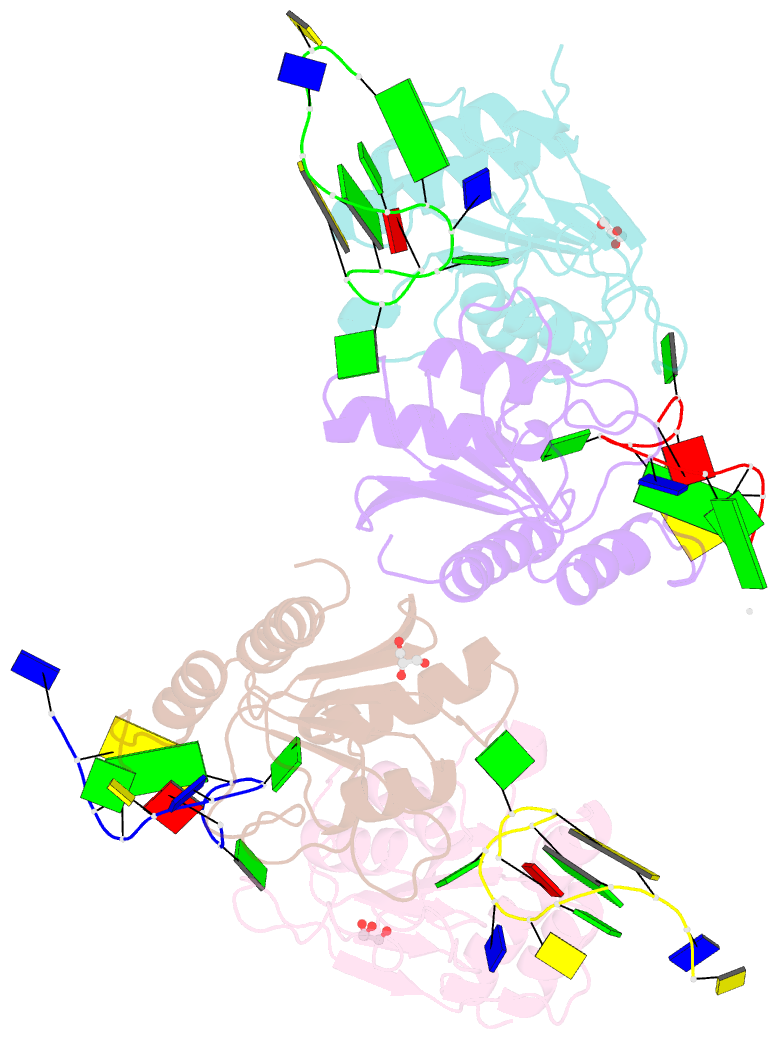Summary information and primary citation
- PDB-id
- 8e2q; SNAP-derived features in text and JSON formats;
DNAproDB
- Class
- DNA binding protein-DNA
- Method
- X-ray (2.34 Å)
- Summary
- Crystal structure of tadac-1.17 in a complex with ssDNA
- Reference
- Lam DK, Feliciano PR, Arif A, Bohnuud T, Fernandez TP, Gehrke JM, Grayson P, Lee KD, Ortega MA, Sawyer C, Schwaegerle ND, Peraro L, Young L, Lee SJ, Ciaramella G, Gaudelli NM (2023): "Improved cytosine base editors generated from TadA variants." Nat.Biotechnol., 41, 686-697. doi: 10.1038/s41587-022-01611-9.
- Abstract
- Cytosine base editors (CBEs) enable programmable genomic C·G-to-T·A transition mutations and typically comprise a modified CRISPR-Cas enzyme, a naturally occurring cytidine deaminase, and an inhibitor of uracil repair. Previous studies have shown that CBEs utilizing naturally occurring cytidine deaminases may cause unguided, genome-wide cytosine deamination. While improved CBEs that decrease stochastic genome-wide off-targets have subsequently been reported, these editors can suffer from suboptimal on-target performance. Here, we report the generation and characterization of CBEs that use engineered variants of TadA (CBE-T) that enable high on-target C·G to T·A across a sequence-diverse set of genomic loci, demonstrate robust activity in primary cells and cause no detectable elevation in genome-wide mutation. Additionally, we report cytosine and adenine base editors (CABEs) catalyzing both A-to-I and C-to-U editing (CABE-Ts). Together with ABEs, CBE-Ts and CABE-Ts enable the programmable installation of all transition mutations using laboratory-evolved TadA variants with improved properties relative to previously reported CBEs.





